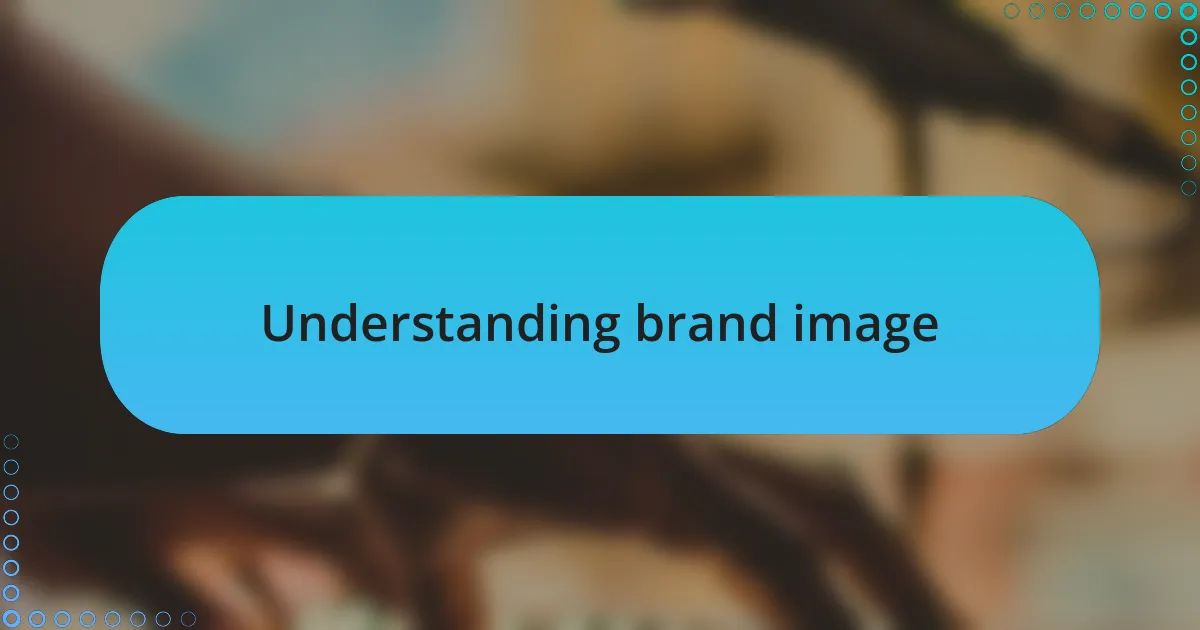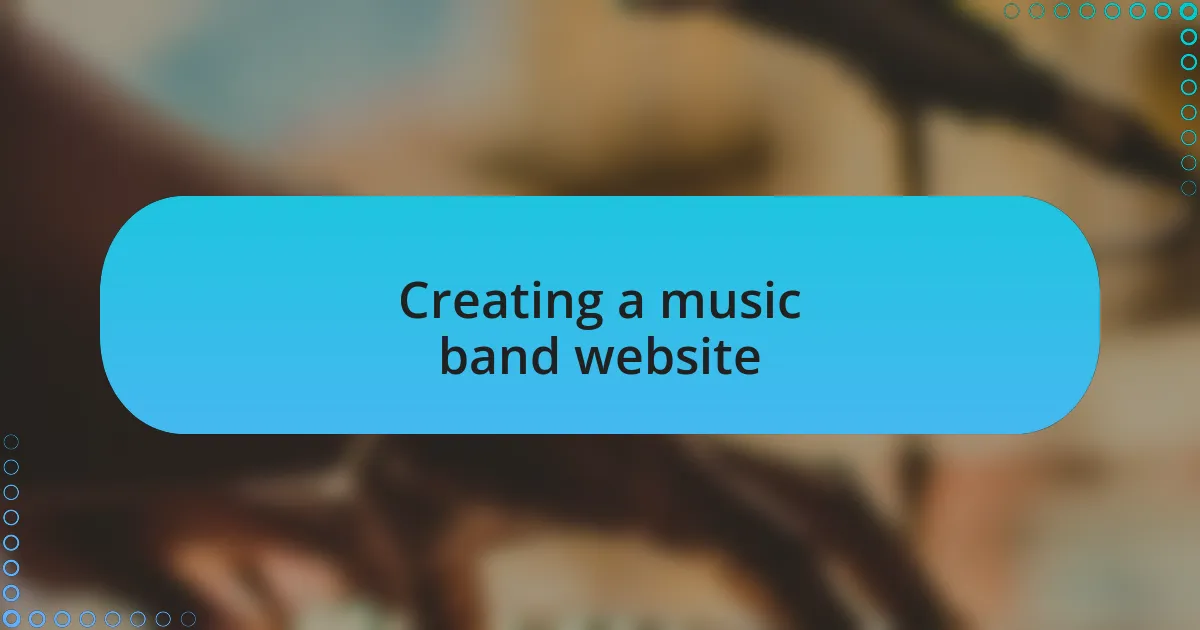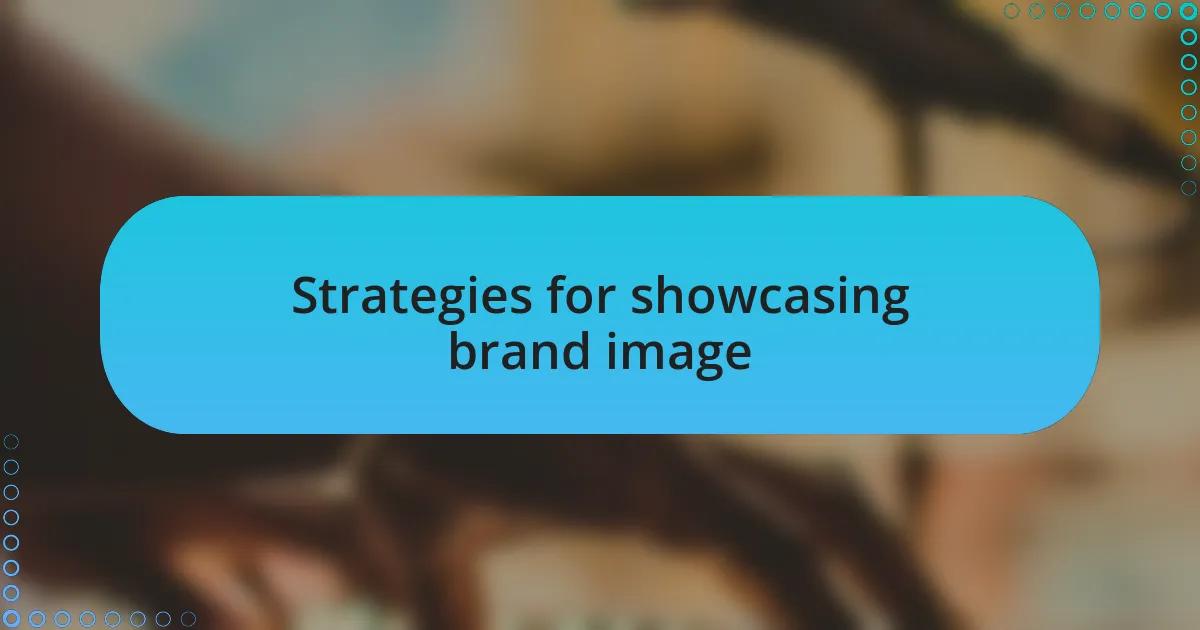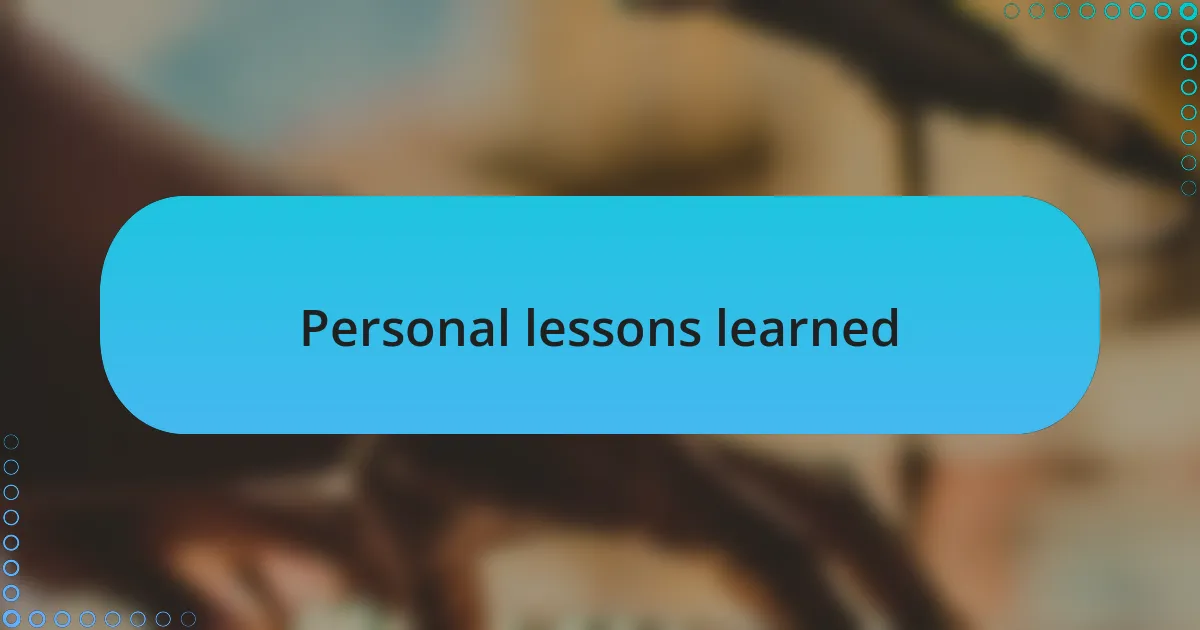Key takeaways:
- Brand image shapes public perception and evokes emotions, impacting fan loyalty and connection to the artist.
- A music band website should reflect the band’s identity through visuals and storytelling, enhancing user experience and engagement.
- Consistency across all platforms is crucial for reinforcing a cohesive brand identity that resonates with the audience.
- Authenticity, feedback, and adaptation are vital for developing a strong brand image and maintaining relevance in the music industry.

Understanding brand image
Brand image is how the public perceives a band, and it’s crucial in the music industry. I remember the first time I attended a live show for a local band. The energy they exuded—how they dressed, interacted with the crowd, and even the merchandise they sold—shaped my perception of them immensely. It made me wonder: how do these artists create a lasting impression?
The visual elements, like logos and album covers, play a significant role in this perception. I once was drawn to a particular album solely because of its striking artwork. It felt like the design captured the essence of their music. This experience taught me that an appealing brand image isn’t just about aesthetics; it tells a story and evokes emotions that resonate with fans.
Additionally, consistency in branding can deepen a band’s identity. I recall following an artist whose sound evolved over the years, but their brand image remained cohesive. It’s fascinating how fans can develop loyalty when they feel connected to a band’s journey through their image. Have you noticed how some bands instantly evoke nostalgia? That’s the power of a well-crafted brand image at work.

Creating a music band website
Creating a music band website goes beyond just having a digital presence; it’s about crafting an experience that mirrors the band’s identity. When I designed my own band’s site, I focused heavily on the colors and fonts that reflected our sound—bold and energetic. Have you ever landed on a website and immediately felt the vibe of the music? That’s what I aimed for, ensuring every visual element resonated with the music we create.
I remember spending hours selecting the right images for the homepage. Each photo was a snapshot of our journey, from early rehearsals to electrifying live performances. I wanted fans to feel the excitement and raw energy we bring to the stage. Did you know that high-quality visuals can significantly affect a visitor’s first impression? It’s incredible how a single image can evoke nostalgia or excitement, triggering an immediate emotional response.
Another critical aspect I learned was the importance of clear navigation. As a fan, I’ve often found myself frustrated when I can’t easily find a band’s upcoming tour dates or new releases. By keeping our website user-friendly, I noticed an increase in engagement. I realize now that it’s not just about showcasing music; it’s about guiding the audience through the band’s story and making them feel a part of it.

Strategies for showcasing brand image
When it comes to showcasing your brand image, storytelling is an effective strategy that I’ve implemented on my band’s website. I made it a point to share not just our music but the stories behind each song. Each track has its own narrative, and by weaving those stories throughout the site, I made it easier for fans to connect with our journey. Have you ever felt more connected to an artist after learning the backstory of a song? That personal touch can deepen the listener’s experience and loyalty.
Another strategy I found valuable is engaging with fans through social media integration. By featuring our social media feeds on the website, I created a living, breathing representation of our band. This dynamic content not only showcases our latest updates but also highlights our interactions with fans, making the website feel more alive. Reflecting on my experience, I’ve noticed that when fans see their comments or photos on our site, it fosters a sense of community. Isn’t it rewarding to feel part of something bigger?
Finally, I learned that consistency across all platforms is crucial. When I updated our website, I ensured that our social media graphics, promotional materials, and live performances all carried the same visual identity. I remember how it felt when I finally recognized our brand in various contexts—the colors, the fonts, the vibe—all aligned. It was satisfying to see everything come together, reinforcing our presence and making it easier for fans to identify us. Isn’t that what every artist hopes for? A cohesive brand image that resonates deeply with their audience.

Personal lessons learned
One lesson I learned is the power of authenticity in building a brand image. I remember when we first launched our website, I hesitated to showcase some of our less polished recordings. But then I thought, what if those rough edges reveal the true essence of our music? Sharing that raw authenticity allowed us to connect more genuinely with our audience, reminding me that vulnerability can foster trust and deepen relationships.
I also realized that listening to feedback is essential for developing a strong brand image. After hosting a fan poll on our website about merchandise designs, I was surprised by the enthusiasm and suggestions we received. It felt incredible to see our fans engage and feel valued, reinforcing the idea that their input could shape our brand. Have you ever felt heard in a community? That sense of belonging can create lasting loyalty.
Lastly, I learned the importance of adapting to change. Initially, I was resistant to updating our site’s layout, fearing it might alienate long-time fans. However, after finally embracing a modern design, I was amazed at how much positive response we received. It suddenly became clear: evolution is part of the journey. Isn’t it inspiring to see your brand grow alongside your music? Adapting helps maintain relevance in an ever-changing landscape, and I now cherish that evolving nature of our brand image.